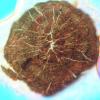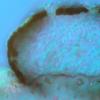
04-11-2025 12:43
 Edvin Johannesen
Edvin Johannesen
Hi! One more found on old Populus tremula log in O

04-11-2025 09:07
Hello.A suspected Hymenoscyphus sprouting on a thi

03-11-2025 21:34
 Edvin Johannesen
Edvin Johannesen
These tiny (0.4-0.5 mm diam.), whitish, short-stip

28-10-2025 15:37
Carl FarmerI'd be grateful for any suggestions for this strik

03-11-2025 16:30
 Hans-Otto Baral
Hans-Otto Baral
Hello I want to ask you if you have found this ye

28-10-2025 19:33
 Nicolas Suberbielle
Nicolas Suberbielle
Bonjour à tous,Je voudrais votre avis sur cette r

31-10-2025 09:19
 Lothar Krieglsteiner
Lothar Krieglsteiner
Can somebody provide me with a file of:Rogerson CT
Coelomycete on Picea and Cladonia
Wolfgang von Brackel,
25-02-2018 18:50
I found a strange (to me) coelomycete growing as well on fallen needles of Picea abies as on Cladonia digitata growing at the foot of the tree.
Description: Conidiomata solitary, sessile, on the squamules and podetia of Cladonia digitata, cushion-like to suborbicular, black, 100–150 µm in diam., opening by radially splitting of the wall (habitually like the peristome of bryophytes); wall brown, composed of one layer of pseudoparenchymatous cells, 1–2 µm thick, cells in surface view more or less in radial lines, rectangular, c. 3–4 × 4–4.5 µm; pycnidial cavity first filled with thin-walled, hyaline, isodiametric cells, 3–4 µm diam., later these cells are dissollving, some of them turning to broadly ampulliform conidiogenous cells, 4–6 × 3.5–5 µm; conidia non-septate, ellipsoid, hyaline, both ends rounded, with one minute guttule near each end, (3.5–)4.1–5.3(–6.0) × (2.0–)2.1–2.7(–3.0) µm, l/b = (1.3–)1.7–2.3(–2.8) (n = 20).
Strange to me is the splitting of the pycnidial wall and the conidiogenous cells developing inside the lumen and not on the inner side of the wall. Fist idea was Rhizospaera, but this has other pycnidia. Actinothyrium has fitting pycnidia, but here the conidia are filiform. Can anyone help?
Alain GARDIENNET,
25-02-2018 22:29
Re : Coelomycete on Picea and Cladonia
Hi Wolfgang,
Strange to find these thyriothecia on needdles as on Cladonia. On needles grow Microthyriaceae. On Cladonia we can observe some Lichenopeltella. ¨Pehaps you have the asexual morph of one of them, and the best thing to do is probably to wait for the sexual morph.
Alain
Wolfgang von Brackel,
26-02-2018 21:25
Re : Coelomycete on Picea and Cladonia
Hi Alain,
I examined it carefully, it is really the same taxon on the needles as on Cladonia. Microthyriaceae is a good hint, but I have no idea how asexual state of this family look like. Lichenopeltella I think I can exclude because of the missing basal plate and the thickenings around the ostiole.
Wolfgang
I examined it carefully, it is really the same taxon on the needles as on Cladonia. Microthyriaceae is a good hint, but I have no idea how asexual state of this family look like. Lichenopeltella I think I can exclude because of the missing basal plate and the thickenings around the ostiole.
Wolfgang



